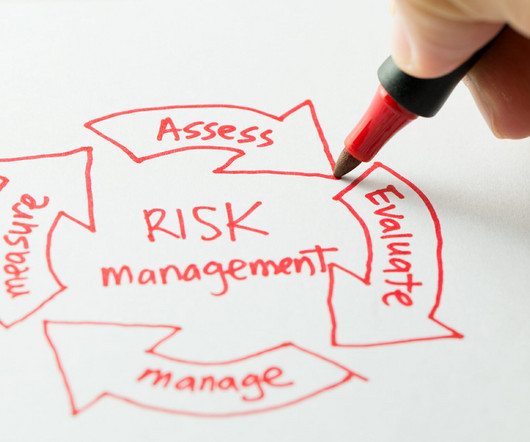Getting Started with Enterprise Risk Management
MHA Consulting
MARCH 14, 2024
Enterprise Risk Management is the activity of identifying and mitigating the hazards that threaten an organization (definition from Strong Language: The MHA Glossary of Essential Business Continuity Terminology , available for free download with registration). ERM is all about reducing. ERM is all about reducing.





















Let's personalize your content